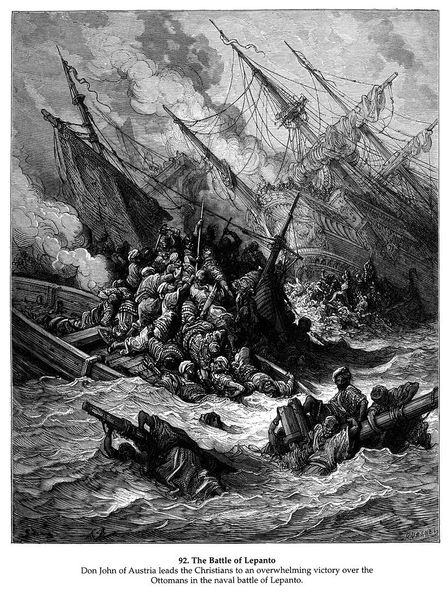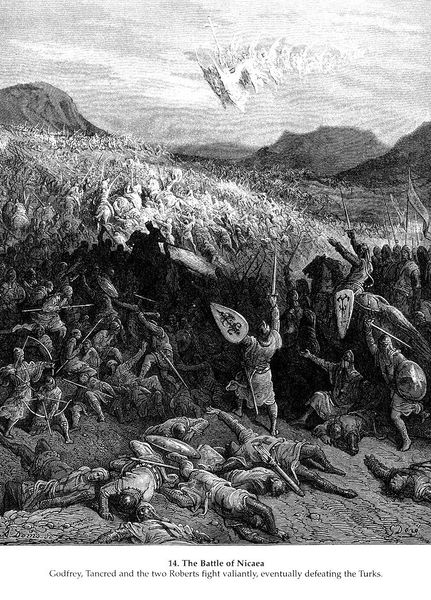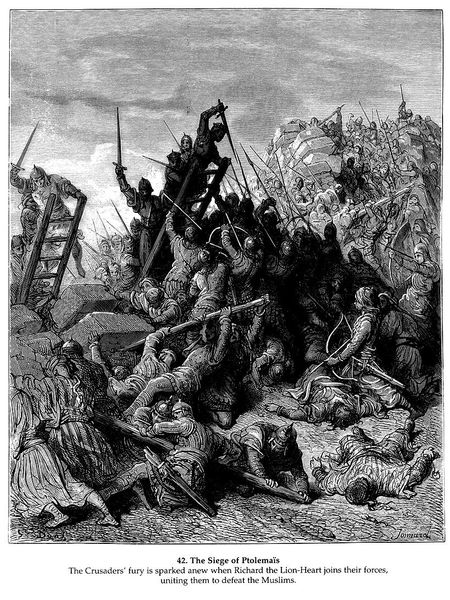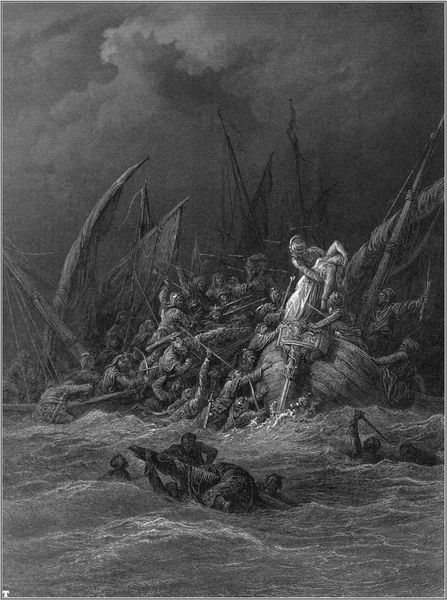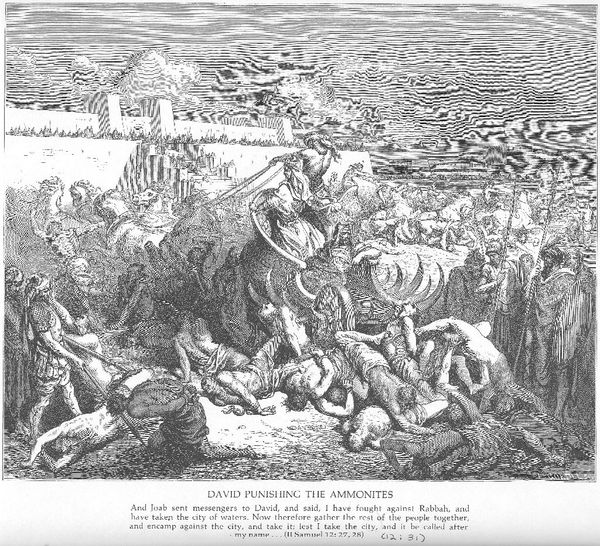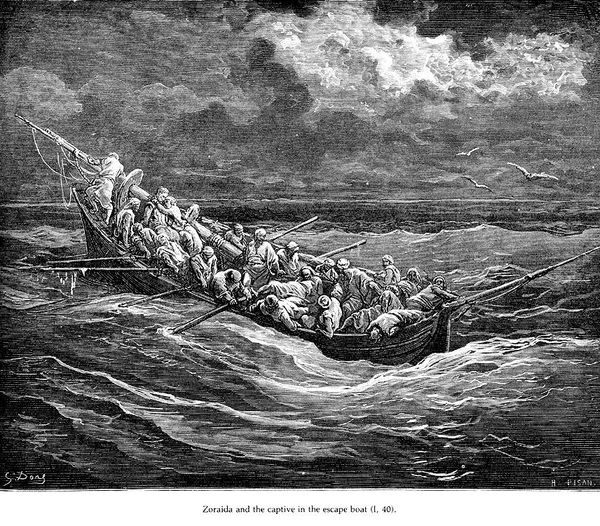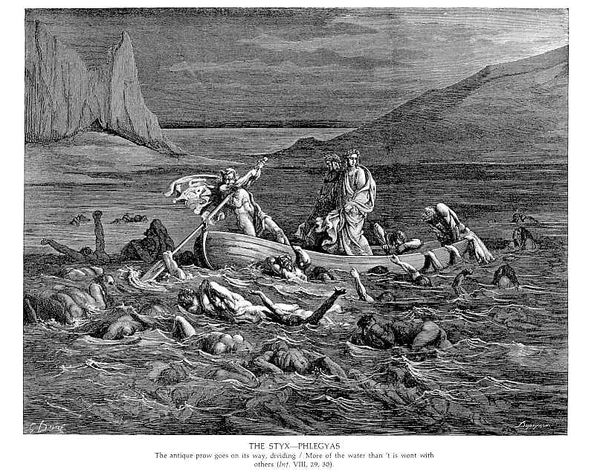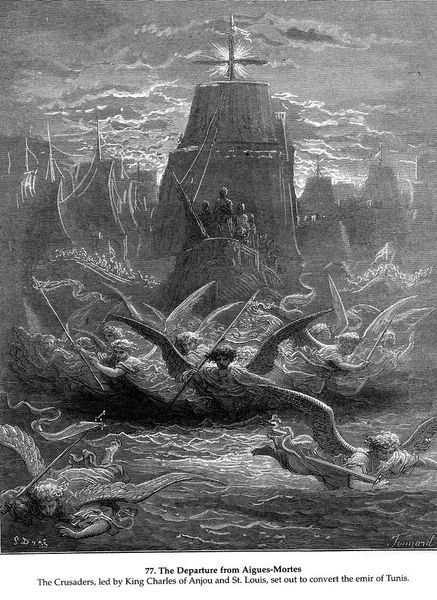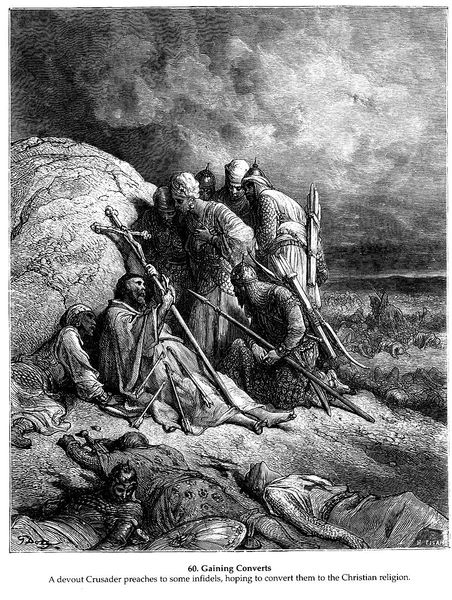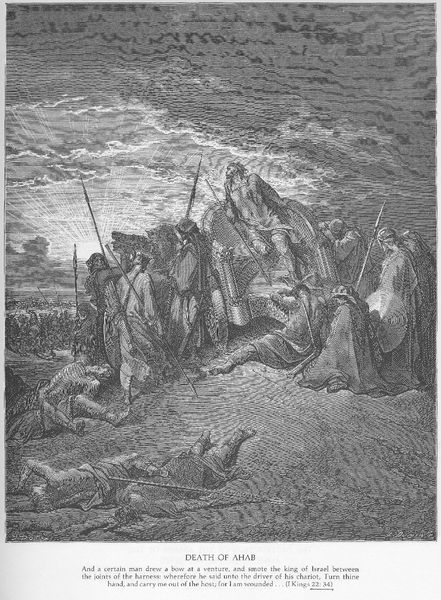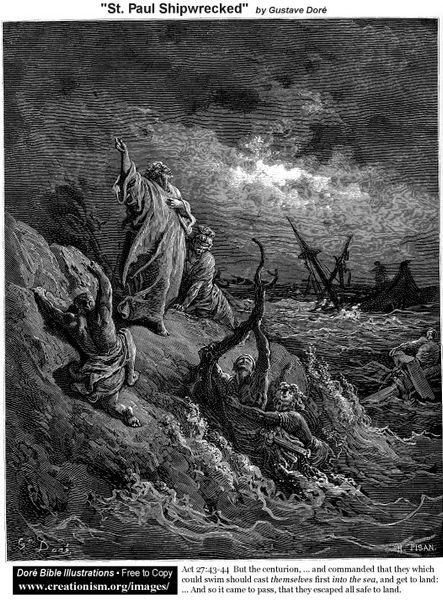
Copyright: Public domain
Curator: This intense scene is brought to us by Gustave Dore in 1877, entitled "Richard I the Lionheart Delivering Jaffa". It’s rendered in charcoal, a medium that really lends itself to the dramatic, almost theatrical, atmosphere he creates here. Editor: Yes, dramatic is exactly the right word. There’s a powerful sense of motion and violence conveyed simply through the density of marks and the stark contrast between light and shadow. Look at the dynamism, it’s as though we are in the thick of the conflict. Curator: Indeed. Dore was a master of effectively using light to create focal points. In this piece, our eyes are immediately drawn to the clustered combatants struggling onto the shore, aren’t they? Editor: They are, but beyond the immediacy, the drawing serves a clear narrative function, situated as it is in the visual culture surrounding the Crusades and figures like Richard the Lionheart. Consider how this image might have reinforced certain political narratives, bolstering support for imperial ambitions. Dore wasn’t merely illustrating a historical event; he was actively participating in the shaping of public memory and opinion, wasn’t he? Curator: An interesting point. Considering the values placed on heroic leadership, and the prevailing romantic notions of chivalry at the time, it does appear that the composition intends to imbue Richard with a sense of bravery, almost righteousness, within this tumultuous conflict. Editor: What about the way the soldiers’ armour shines despite the bleak setting? The effect seems purposeful. Do you feel that the chiaroscuro here could represent moral conflict as much as it represents mere historical strife? Curator: That’s a fine question, it truly could. In focusing our attention on this central cluster of fighting figures, the use of contrasting highlights certainly elevates them above the obscured figures lurking in the ocean at the base of the image and in the obscure, shaded areas on the naval ship behind the action. It creates a distinct visual hierarchy. Editor: This interplay of light and shadow makes the chaos almost legible. I wonder how a contemporary audience interpreted this blend of heroism and brutality. The romantic aesthetic is really strong here. Curator: Ultimately, Dore's rendering offers us more than just an historical illustration; it's a carefully constructed narrative about power, conflict, and the way visual culture helps shape these historical recollections. Editor: I see this piece as proof of how visual depictions of events can really construct legends. Food for thought.
Comments
No comments
Be the first to comment and join the conversation on the ultimate creative platform.
